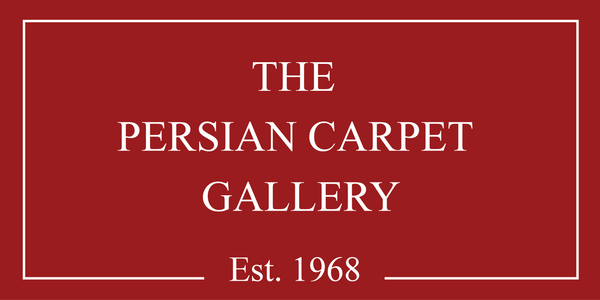Blogs
Kashan's 17th-Century Silk Kilim
The 17th-century Silk Kilim from Kashan is a remarkable Persian textile masterpiece, now housed in the Österreichisches Museum für angewandte Kunst (MAK), Vienna. Woven entirely from silk, this exquisite kilim showcases the exceptional craftsmanship of Kashan’s artisans during the Safavid dynasty. Its intricate design, resembling a Persian miniature painting, features delicate floral patterns, human figures, and winged motifs. As one of the finest examples of Persian flatweave art, this kilim highlights the rich heritage of kilim weaving, which predates knotted rugs. A true testament to Persian artistic excellence, it remains an invaluable historical artifact.
Silk Floral Safavid Carpet at the Österreichisches Museum für Angewandte Kunst (MAK), Vienna
The Silk Floral Carpet at the Österreichisches Museum für Angewandte Kunst (MAK) in Vienna is a stunning example of 17th-century Persian craftsmanship, likely originating from Kashan. This luxurious Polonaise carpet, woven with silk, silver, and gold threads, features an intricate central medallion, arabesques, floral motifs, and cloud-band patterns. With an impressive 266,800 knots per square meter, it exemplifies the artistic sophistication of the Safavid era. Once prized by European aristocrats, this masterpiece remains a significant symbol of Persian textile heritage and timeless elegance.
The Magnificent ‘Vase’ Carpet: A 16th-Century Persian Masterpiece
The ‘Vase’ Carpet, dating back to the late 16th century, is a stunning example of Persian craftsmanship, currently preserved at the Carpet Museum of Iran, Tehran. Measuring 409 cm x 353 cm, this masterpiece features an impressive 275,000 Persian knots per square meter, crafted with unbleached cotton warp and weft and a wool pile.
Scholars debate its origin, with some, like Arthur Upham Pope, attributing it to Joshagan, while others suggest Isfahan or Kerman, both major carpet-weaving centers of the Safavid era. Characterized by intricate floral and vase motifs, this carpet reflects the artistic brilliance of its time.
A timeless treasure, the ‘Vase’ Carpet remains a symbol of Persia’s rich cultural heritage and exceptional weaving traditions.
The Magnificent Silk Animal Carpet
The Silk Animal Carpet, woven in Isfahan in the late 17th century, is an exquisite masterpiece reflecting the pinnacle of Persian craftsmanship. Measuring 233 x 168 cm, this carpet features a vibrant design of animals inspired by Safavid-era miniatures, dynamically placed across a floral background. Its intricate border of intertwining flowers and birds adds to its elegance.
With a remarkable density of 600,000 knots per square meter, the carpet’s silk pile and unbleached cotton foundation highlight the weaver’s precision and artistry. Now housed in the Carpet Museum of Iran, Tehran, two similar pieces reside in the prestigious Louvre Museum in Paris, cementing its status as an enduring symbol of Persian heritage and artistic brilliance.
Floral Carpet with Arabesques – A Masterpiece of Persian Weaving
This exquisite 16th-century Persian rug from Mashhad is a testament to the golden age of Persian carpet weaving. Commissioned by Shah Abbas the Great, it confirms Mashhad’s prominence as a weaving center during the Safavid era. Measuring 560 x 354 cm, the rug features an impressive density of 490,000 knots per square meter, with a wool pile and flat-woven silver thread, creating a stunning relief effect. Its intricate floral patterns and arabesques showcase Persian artistic brilliance. Remarkably well-preserved, this masterpiece remains a symbol of elegance, craftsmanship, and cultural heritage, housed in the Shrine of the Mosque at Mashhad.
Iran National Art Museum Silk Rug
This exquisite Rug, crafted in Tabriz during the early 16th century, is a hallmark of Persian artistry and sophistication. Preserved at the Iran Bastan Museum in Tehran, it measures 204 x 195 cm and features an extraordinary density of 693,000 Turkish knots per square meter.
Made with a white silk warp and weft, its silk pile is enriched with luxurious gold and silver threads. The design showcases a central medallion surrounded by intricate cloud-bands inspired by Chinese motifs, along with depictions of animals, birds, and possibly fish. The delicate border, adorned with gold and silver accents, frames the piece beautifully, enhancing its visual appeal.
A symbol of the Safavid era's artistic excellence, this carpet reflects the unmatched skill and creativity of Persian weavers, offering a glimpse into a golden age of textile craftsmanship.
Medallion and Animal Carpet
The Medallion and Animal Carpet, a masterpiece from 16th-century Tabriz in Northwest Persia, reflects the Iranian concept of Paradise. Housed in the Musée des Arts Décoratifs in Paris, this fragment features a lush garden landscape with blossoming trees, flowing streams, and diverse animals, symbolizing harmony and abundance. Made with Persian knots, yellow silk warp, silk weft, and a wool pile, it exemplifies the refined craftsmanship of the Safavid era. The other half of this rug is preserved in Cracow, Poland, while a larger, more intricate example exists in the Los Angeles County Museum of Art. These rugs are cultural artifacts that celebrate Persian artistry and spiritual symbolism.
Medallion and Arabesque Carpet
This Persian medallion carpet, attributed to Tabriz in the 17th century, is a masterpiece of craftsmanship housed in the Metropolitan Museum of Art, New York. Measuring 802 x 412 cm, it features a dense knotting of 620,000 knots per square meter, with a cotton warp, silk weft, and wool pile.
The central design showcases a circular medallion flanked by cartouches and arabesques, surrounded by slender, flower-adorned branches. Stylized red tulip-like flowers, "cloud-band" motifs (tchi), and vibrant peacocks add life and color to the field. The triple-bordered frame includes spiraling branches and stylized flowers, combining elegance and intricate detail.
A gift from the Kress Foundation, this carpet is a stunning example of Persian artistry, celebrated for its extraordinary beauty and technical mastery.
The Art of Dyes in Persian Carpets
The vibrant hues of Persian carpets showcase the skill and artistry of Iranian artisans. Known for their mastery in blending and harmonizing colors, they create rich, warm, and sophisticated shades that endure through time. For centuries, the dyes used were sourced exclusively from nature, including plants and animals. In some traditional villages, this age-old practice continues, preserving the legacy of natural dyeing.









